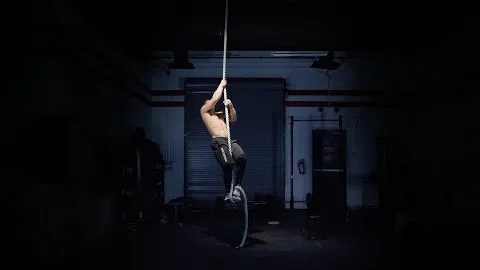
Looking for a challenging full-body workout that will test your strength, endurance, and mental grit? Look no further than the rope climb exercise. This intense activity not only builds upper body strength but also engages your core, legs, and cardiovascular system, making it an excellent choice for a comprehensive workout. In this article, we will dive deep into the world of rope climbing, exploring its benefits, techniques, and variations, while highlighting its importance for athletes and fitness enthusiasts of all levels.
Rope climbing primarily targets the upper body muscles, including the arms, shoulders, back, and chest. The repeated pulling motion involved in climbing the rope helps to build strength and definition in these muscle groups. As you progress in your rope climbing ability, you'll notice increased muscle tone and overall physical strength.
While the upper body does most of the work during rope climbing, the core muscles play a crucial role in maintaining stability and balance. The constant engagement of the abdominal and lower back muscles during rope climbing helps to develop a strong core and improves overall body control.
One of the most evident benefits of rope climbing is the improvement in grip strength. The act of gripping and pulling the rope forces you to strengthen your hands, wrists, and forearms. Over time, this leads to enhanced overall grip strength, which translates to improved performance in various sports and daily activities.
Contrary to what some might think, rope climbing is not just a strength exercise but also an excellent cardiovascular workout. The rhythmic nature of climbing helps to elevate heart rate, improve circulation, and enhance overall endurance. Regular rope climbing sessions can help you build stamina and increase aerobic capacity.
Rope climbing is not for the faint of heart. It requires focus, determination, and mental toughness to conquer the heights. As you challenge yourself to climb higher and faster, you'll develop mental resilience and a sense of accomplishment. This newfound confidence often spills over into other areas of life, boosting self-esteem and motivation.
The classic technique involves using your hands to grip the rope, alternating pulling one hand over the other while using your lower body as support. Start by wrapping the rope around one foot, then use the momentum generated by your legs to pull yourself upward. As you reach the top, stand up on the rope and repeat the process.
The Russian climb technique is similar to the classic climb, with the difference being that both feet are used to wrap around the rope instead of just one. This technique provides added stability and allows for a more controlled ascent.
The L-Sit climb is an advanced variation that demands significant core strength and stability. Start by sitting on the floor with your legs straight out in front of you and your hands gripping the rope. Engaging your core, lift your legs off the ground, creating an L-shape with your body. Use your arms to pull yourself up the rope while maintaining the L-sit position.
To increase the intensity of your rope climbing workout, consider adding weights. By attaching a weighted vest or holding a dumbbell between your legs, you can challenge your muscles even further, leading to greater strength gains.
If you're looking for a true test of your upper body strength, give one-armed rope climbs a try. This variation requires exceptional grip strength and full-body control. Start by using both hands initially, then gradually transition to using only one hand to climb the rope. This exercise is highly advanced and should only be attempted by those with significant climbing experience.
For a high-intensity interval training (HIIT) workout, incorporate rope climbing intervals into your routine. Alternate between periods of intense climbing and short rest intervals. This type of training not only burns calories but also improves cardiovascular fitness and enhances overall endurance.
Rope climbing is a challenging and dynamic exercise that provides numerous physical and mental benefits. By incorporating rope climbs into your fitness routine, you can improve strength, boost cardiovascular fitness, and develop mental toughness. Whether you're an athlete looking to enhance your performance or a fitness enthusiast seeking a new challenge, rope climbing is a highly effective workout option. Start incorporating this versatile exercise into your training regime and experience the transformative effects it can have on your body and mind.
If you're looking for a gym, fitness club or yoga studio, you've come to the right place.
You can find information about gyms in your area. Browse catalog of gyms and find gyms with classes which are you looking for.
On gym page you can find simple information like address, phone or website. You can find list of available classes. You can check availability of personal training or small group classes. On place page you can also see information about open hours.
You can find gyms near you with amenities, courts, studios and equipments.
Use our map to find gym at your city or district.
In Gym Navigator you can find list of exercises with movies for many body parts.
You can browse exercises catalog and find exercises the best of you.
You can also find exercises grouped into workout plans, which you can use to improve you body. Each routine show you exercises one by one and give you possibility to count you progress and count down rest time.